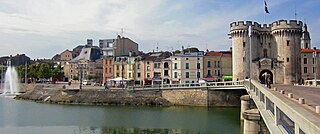
Verdun is a city in the Meuse department in Grand Est, northeastern France. It is an arrondissement of the department.

The Battle of Diersheim saw a First French Republic army led by Jean Victor Marie Moreau clash with a Habsburg army commanded by Anton Count Sztáray de Nagy-Mihaly. Though both sides suffered about 3,000 killed or wounded in the bitter fighting, the Austrians finally retreated with the loss of 2,000 prisoners and 13 artillery pieces. Austrian General Wilhelm von Immens was killed and Sztáray badly wounded. The combat at Diersheim was a waste of lives because Napoleon Bonaparte signed the Preliminaries of Leoben with Austria a few days earlier, calling for a truce. However, Moreau's reputation was enhanced by his hard-won victory which occurred during the War of the First Coalition, part of the French Revolutionary Wars. Diersheim is one of a number of villages that make up the municipality of Rheinau. Diersheim lies one kilometer southwest of the Rhine River and about 9 kilometres (5.6 mi) northeast of Kehl.
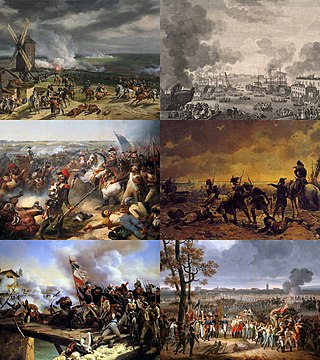
The War of the First Coalition was a set of wars that several European powers fought between 1792 and 1797, initially against the constitutional Kingdom of France and then the French Republic that succeeded it. They were only loosely allied and fought without much apparent coordination or agreement; each power had its eye on a different part of France it wanted to appropriate after a French defeat, which never occurred.
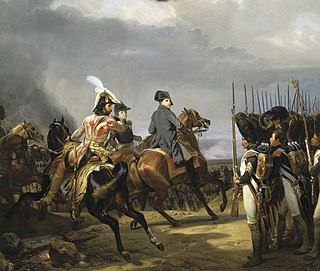
The twin battles of Jena and Auerstedt were fought on 14 October 1806 on the plateau west of the river Saale in today's Germany, between the forces of Napoleon I of France and Frederick William III of Prussia. The defeat suffered by the Prussian Army subjugated the Kingdom of Prussia to the French Empire until the Sixth Coalition was formed in 1813.
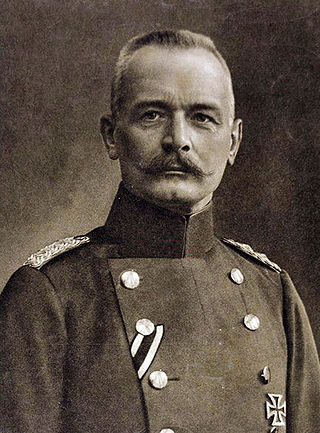
General Erich Georg Sebastian Anton von Falkenhayn was a German general who was the second Chief of the German General Staff of the First World War from September 1914 until 29 August 1916. Falkenhayn replaced General Helmuth von Moltke the Younger after his invasion of France was stopped at the First Battle of the Marne and was in turn removed on 29 August 1916 after the failure of his offensive strategy in the west at the Battle of Verdun, the opening of the Battle of the Somme, the Brusilov Offensive and the Romanian entry into the war. Having planned to win the war before 1917, the German army was reduced to hanging on.
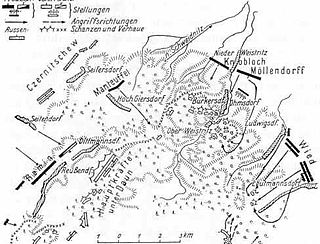
The Battle of Burkersdorf took place on 21 July 1762 during the Third Silesian War. A Prussian army of 23,000 men fought an Austrian army of around 20,000 men.

The Battle of Mollwitz was fought by Prussia and Austria on 10 April 1741, during the First Silesian War. It was the first battle of the new Prussian King Frederick II, in which both sides made numerous military blunders and King Frederick II of Prussia fled the battlefield, but the Prussian Army still managed to attain victory. This battle cemented Frederick's authority over the newly conquered territory of Silesia and gave him valuable military experience.

The Battle of Kulm was fought near the town Kulm and the village Přestanov in northern Bohemia. It was fought on 29–30 August 1813, during the War of the Sixth Coalition. A French corps under General Dominique Vandamme attacked Alexander Osterman-Tolstoy's Russian corps on 29 August. The next day, Friedrich von Kleist's Prussian corps hit Vandamme in the rear while Russian and Austrian reinforcements attacked the French front and left. Vandamme was defeated with the loss of between 13,000 and 25,000 men and 82 guns.

The Battle of Le Mans was a German victory during the Franco-Prussian War that ended French resistance in western France.

The Battle of the Katzbach on 26 August 1813, was a major battle of the Napoleonic Wars between the forces of the First French Empire under Marshal MacDonald and a Russo-Prussian army of the Sixth Coalition under Prussian Marshal Graf (Count) von Blücher. It occurred during a heavy thunderstorm at the Katzbach river between Wahlstatt and Liegnitz in the Prussian province of Silesia. Taking place the same day as the Battle of Dresden, it resulted in a Coalition victory, with the French retreating to Saxony.

The Battle of Măcin, Battle of Maçin, Battle of Matchin or Battle of Matschin took place during the Russo-Turkish War (1787–1792), fought on 9 July 1791 between the Ottoman Empire and the Russian Empire. The Russian army of 30,000 was commanded by Prince Nicholas Repnin, whereas the Turks, numbering about 80,000 men, were led by Koca Yusuf Pasha.
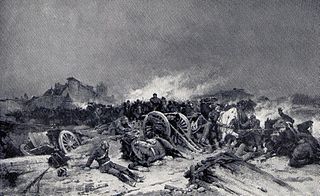
The Battle of Beaune-la-Rolande on 28 November 1870 took place during the Franco-Prussian War, which was won by Prussia. In an attempt to relieve the Siege of Paris, French General Crouzat's XX Corps launched an attack against three Prussian brigades resting in Beaune-la-Rolande. These brigades were from the Prussian X Corps which was detailed to guard the flanks and rear of the force besieging Paris and provide early warning of any French counter-attacks. The French committed a force of 60,000 men, largely conscripts of the Garde Mobile, and 140 guns against the Prussians' 9,000 men and 70 guns, mostly drawn from regular troops, although military historian Gaston Bodart estimated their strength at 40,000 men and 174 guns. Despite the superiority of numbers the French attack failed to take the village and was ultimately forced to retreat by Prussian reinforcements.

The Second Battle of Wissembourg from 26 December 1793 to 29 December 1793 saw an army of the First French Republic under General Lazare Hoche fight a series of clashes against an army of Austrians, Prussians, Bavarians, and Hessians led by General Dagobert Sigmund von Wurmser. There were significant actions at Wœrth on 22 December and Geisberg on 26 and 27 December. In the end, the French forced their opponents to withdraw to the east bank of the Rhine River. The action occurred during the War of the First Coalition phase of the French Revolutionary Wars.

The Battle of Froeschwiller saw Republican French armies led by Lazare Hoche and Charles Pichegru attack a Habsburg Austrian army commanded by Dagobert Sigmund von Wurmser. On the 18th, a French attack pushed back the Austrians a short distance. After more fighting, a powerful assault on the 22nd forced the entire Austrian army to withdraw to Wissembourg. The action occurred during the War of the First Coalition, part of the Wars of the French Revolution. Froeschwiller is a village in Bas-Rhin department of France, situated about 50 kilometres (31 mi) north of Strasbourg.
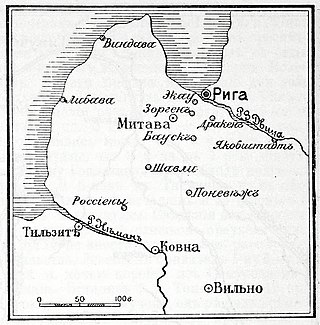
The Battle of Mesothen took place from 26–30 September to 1 October 1812, between the Russian Corps of Finland and the French-allied Prussian Auxiliary Corps. It was fought near the Latvian town of Mežotne, then part of the Courland Governorate.
Events from the year 1792 in France.

The Battle of Haynau was fought on 26 May 1813, between Prussian cavalry under the command of General Gebhard Leberecht von Blücher and a French infantry division under the command of General Nicolas Joseph Maison. The battle resulted in a Prussian victory.

The siege of Antwerp took place during the War of the Sixth Coalition and lasted from 14 January 1814 to 4 May 1814.
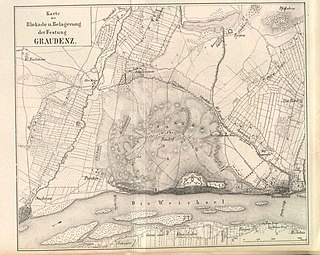
The siege of Graudenz or siege of Grudziądz was a siege during the Napoleonic Wars between 22 January and 11 December, 1807. As part of the War of the Fourth Coalition the Prussian fortress at Graudenz in West Prussia in the Prussian Partition of Poland was besieged by forces of the French Empire and its allies. The garrison, commanded by General Wilhelm René de l'Homme de Courbière, withheld blockade and siege for some 11 months, long past the formal Peace of Tilsit. The French abandoned the siege after the borders between Prussia and the new Duchy of Warsaw were defined; Graudenz/Grudziądz staying a Prussian possession until Poland regained independence after World War I.
The siege of Verdun was a battle fought in France during the Franco-Prussian War from 13 October until 8 November 1870.



















